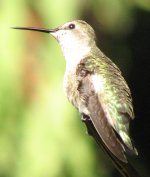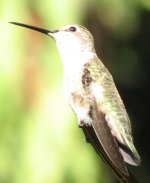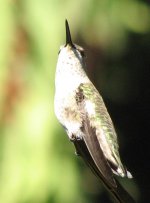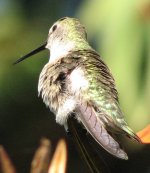djleahy
Well-known member
I'm so used to seeing Anna's Hummingbirds (and so infrequently see any other type) that I find that I don't look closely at them sometimes. I got a close look at this one, though, and between the paleness of the throat and belly, and especially the length of the wings, I think I've got something else. A female Costa's? Didn't seem small, though, and the beak seems hefty. I'd appreciate input from the experts.
Photographed today at Coyote Hills, Fremont, California. It was pretty sunny, so these shots are a bit over-exposed.
Photographed today at Coyote Hills, Fremont, California. It was pretty sunny, so these shots are a bit over-exposed.








